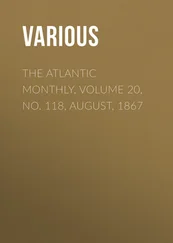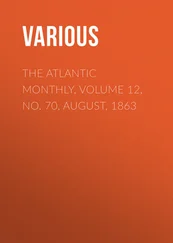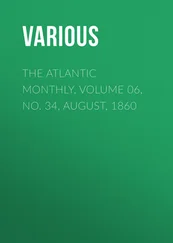August Weismann - Studies in the Theory of Descent, Volume I
Здесь есть возможность читать онлайн «August Weismann - Studies in the Theory of Descent, Volume I» — ознакомительный отрывок электронной книги совершенно бесплатно, а после прочтения отрывка купить полную версию. В некоторых случаях можно слушать аудио, скачать через торрент в формате fb2 и присутствует краткое содержание. Жанр: foreign_antique, foreign_prose, на английском языке. Описание произведения, (предисловие) а так же отзывы посетителей доступны на портале библиотеки ЛибКат.
- Название:Studies in the Theory of Descent, Volume I
- Автор:
- Жанр:
- Год:неизвестен
- ISBN:нет данных
- Рейтинг книги:4 / 5. Голосов: 1
-
Избранное:Добавить в избранное
- Отзывы:
-
Ваша оценка:
- 80
- 1
- 2
- 3
- 4
- 5
Studies in the Theory of Descent, Volume I: краткое содержание, описание и аннотация
Предлагаем к чтению аннотацию, описание, краткое содержание или предисловие (зависит от того, что написал сам автор книги «Studies in the Theory of Descent, Volume I»). Если вы не нашли необходимую информацию о книге — напишите в комментариях, мы постараемся отыскать её.
Studies in the Theory of Descent, Volume I — читать онлайн ознакомительный отрывок
Ниже представлен текст книги, разбитый по страницам. Система сохранения места последней прочитанной страницы, позволяет с удобством читать онлайн бесплатно книгу «Studies in the Theory of Descent, Volume I», без необходимости каждый раз заново искать на чём Вы остановились. Поставьте закладку, и сможете в любой момент перейти на страницу, на которой закончили чтение.
Интервал:
Закладка:
From these experiments it appeared that similar causes (heat) affect different generations of A. Levana in different manners. With both summer broods a high temperature always caused the appearance of Prorsa , this form arising but seldom from the third brood (and then only in a few individuals), while the greater number retained the Levana form unchanged. We may assign as the reason for this behaviour, that the third brood has no further tendency to be accelerated in its development by the action of heat, but that by a longer duration of the pupal stage the Levana form must result. On one occasion the chrysalis stage was considerably shortened in this brood by the continued action of a high temperature, many specimens thus having their period of development reduced from six to three months. The supposed explanation above given is, however, in reality no explanation at all, but simply a restatement of the facts. The question still remains, why the third brood in particular has no tendency to be accelerated in its development by the action of heat, as is the case with both the previous broods?
The first answer that can be given to this question is, that the cause of the different action produced by a similar agency can only lie in the constitution , i.e., in the physical nature of the broods in question, and not in the external influences by which they are acted upon. Now, what is the difference in the physical nature of these respective broods? It is quite evident, as shown by the experiments already described, that cold and warmth cannot be the immediate causes of a pupa emerging in the Prorsa or Levana form, since the last brood always gives rise to the Levana form, whether acted on by cold or warmth. The first and second broods only can be made to partly assume, more or less completely, the Levana form by the application of cold. In these broods then, a low temperature is the mediate cause of the transformation into the Levana form.
The following is my explanation of the facts. The form Levana is the original type of the species, and Prorsa the secondary form arising from the gradual operation of summer climate. When we are able to change many specimens of the summer brood into the winter form by means of cold, this can only depend upon reversion to the original, or ancestral, form, which reversion appears to be most readily produced by cold, that is, by the same external influences as those to which the original form was exposed during a long period of time, and the continuance of which has preserved, in the winter generations, the colour and marking of the original form down to the present time.
I consider the origination of the Prorsa from the Levana form to have been somewhat as follows: – It is certain that during the diluvial period in Europe there was a so-called ‘glacial epoch,’ which may have spread a truly polar climate over our temperate zone; or perhaps a lesser degree of cold may have prevailed with increased atmospheric precipitation. At all events, the summer was then short and comparatively cold, and the existing butterflies could have only produced one generation in the year; in other words, they were monogoneutic . At that time A. Levana existed only in the Levana form. 17As the climate gradually became warmer, a period must have arrived when the summer lasted long enough for the interpolation of a second brood. The pupæ of Levana , which had hitherto hibernated through the long winter to appear as butterflies in the following summer, were now able to appear on the wing as butterflies during the same summer as that in which they left their eggs as larvæ, and eggs deposited by the last brood produced larvæ which fed up and hibernated as pupæ. A state of things was thus established in which the first brood was developed under very different climatic conditions from the second. So considerable a difference in colour and marking between the two forms as we now witness could not have arisen suddenly, but must have done so gradually. It is evident from the foregoing experiments that the Prorsa form did not originate suddenly. Had this been the case it would simply signify that every individual of this species possessed the faculty of assuming two different forms according as it was acted on by warmth or cold, just in the same manner as litmus-paper becomes red in acids and blue in alkalies. The experiments have shown, however, that this is not the case, but rather that the last generation bears an ineradicable tendency to take the Levana form, and is not susceptible to the influence of warmth, however long continued; while both summer generations, on the contrary, show a decided tendency to assume the Prorsa form, although they certainly can be made to assume the Levana form in different degrees by the prolonged action of cold.
The conclusion seems to me inevitable, that the origination of the Prorsa form was gradual – that those changes which originated in the chemistry of the pupal stage, and led finally to the Prorsa type, occurred very gradually, at first perhaps remaining completely latent throughout a series of generations, then very slight changes of marking appearing, and finally, after a long period of time, the complete Prorsa type was produced. It appears to me that the quoted results of the experiments are not only easily explained on the view of the gradual action of climate, but that this view is the only one admissible. The action of climate is best comparable with the so-called cumulative effect of certain drugs on the human body; the first small dose produces scarcely any perceptible change, but if often repeated the effect becomes cumulative, and poisoning occurs.
This view of the action of climate is not at all new, most zoologists having thus represented it; only the formal proof of this action is new, and the facts investigated appear to me of special importance as furnishing this proof. I shall again return to this view in considering climatic varieties, and it will then appear that also the nature of the transformation itself confirms the slow operation of climate.
During the transition from the glacial period to the present climate A. Levana thus gradually changed from a monogoneutic to a digoneutic species, and at the same time became gradually more distinctly dimorphic, this character originating only through the alteration of the summer brood, the primary colouring and marking of the species being retained unchanged by the winter brood. As the summer became longer a third generation could be interpolated – the species became polygoneutic; and in this manner two summer generations alternated with one winter generation.
We have now to inquire whether facts are in complete accordance with this theory – whether they are never at variance with it – and whether they can all be explained by it. I will at once state in anticipation, that this is the case to the fullest extent.
In the first place, the theory readily explains why the summer but not the winter generations are capable of being transformed; the latter cannot possibly revert to the Prorsa form, because this is much the younger. When, however, it happens that out of a hundred cases there occurs one in which a chrysalis of the winter generation, having been forced by warmth, undergoes transformation before the commencement of winter, and emerges in the summer form, 18this is not in the least inexplicable. It cannot be atavism which determines the direction of the development; but we see from such a case that the changes in the first two generations have already produced a certain alteration in the third, which manifests itself in single cases under favourable conditions (the influence of warmth) by the assumption of the Prorsa form; or, as it might be otherwise expressed, the alternating heredity (of which we shall speak further), which implies the power of assuming the Prorsa form, remains latent as a rule in the winter generation, but becomes continuous in single individuals.
Читать дальшеИнтервал:
Закладка:
Похожие книги на «Studies in the Theory of Descent, Volume I»
Представляем Вашему вниманию похожие книги на «Studies in the Theory of Descent, Volume I» списком для выбора. Мы отобрали схожую по названию и смыслу литературу в надежде предоставить читателям больше вариантов отыскать новые, интересные, ещё непрочитанные произведения.
Обсуждение, отзывы о книге «Studies in the Theory of Descent, Volume I» и просто собственные мнения читателей. Оставьте ваши комментарии, напишите, что Вы думаете о произведении, его смысле или главных героях. Укажите что конкретно понравилось, а что нет, и почему Вы так считаете.












